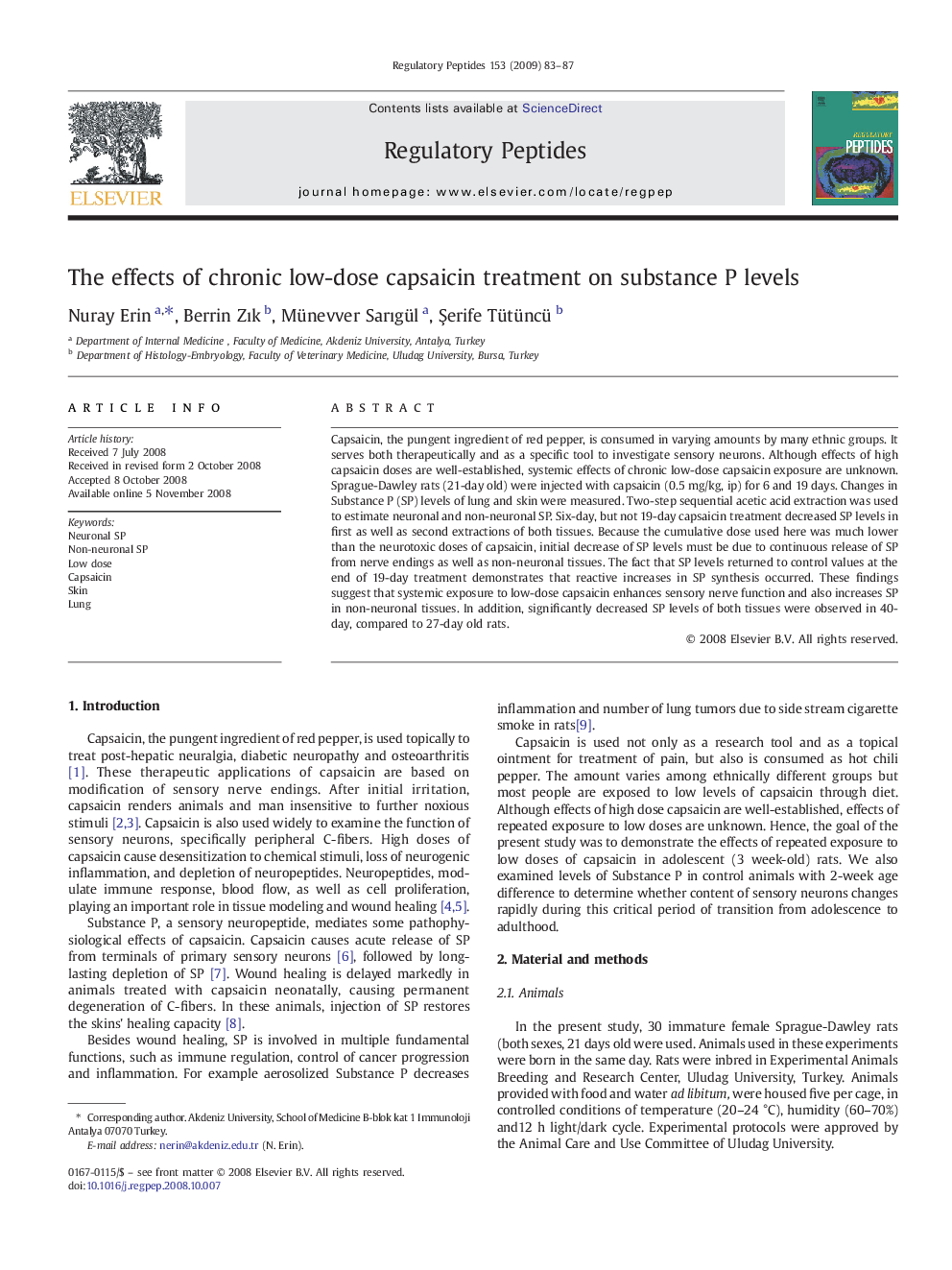| Article ID | Journal | Published Year | Pages | File Type |
|---|---|---|---|---|
| 2022912 | Regulatory Peptides | 2009 | 5 Pages |
Capsaicin, the pungent ingredient of red pepper, is consumed in varying amounts by many ethnic groups. It serves both therapeutically and as a specific tool to investigate sensory neurons. Although effects of high capsaicin doses are well-established, systemic effects of chronic low-dose capsaicin exposure are unknown. Sprague-Dawley rats (21-day old) were injected with capsaicin (0.5 mg/kg, ip) for 6 and 19 days. Changes in Substance P (SP) levels of lung and skin were measured. Two-step sequential acetic acid extraction was used to estimate neuronal and non-neuronal SP. Six-day, but not 19-day capsaicin treatment decreased SP levels in first as well as second extractions of both tissues. Because the cumulative dose used here was much lower than the neurotoxic doses of capsaicin, initial decrease of SP levels must be due to continuous release of SP from nerve endings as well as non-neuronal tissues. The fact that SP levels returned to control values at the end of 19-day treatment demonstrates that reactive increases in SP synthesis occurred. These findings suggest that systemic exposure to low-dose capsaicin enhances sensory nerve function and also increases SP in non-neuronal tissues. In addition, significantly decreased SP levels of both tissues were observed in 40-day, compared to 27-day old rats.
